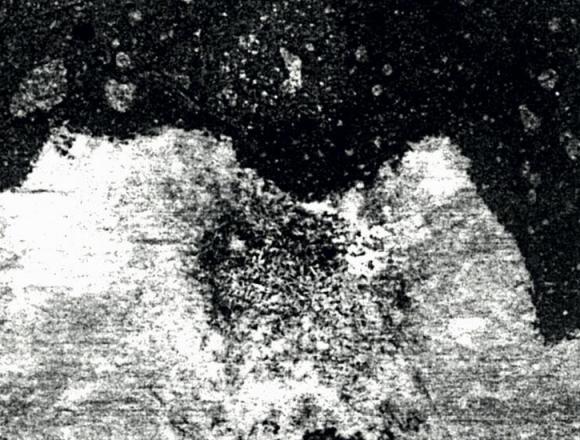Ore deposits sometimes remain undeveloped due to low rates of enrichability. When traditional methods do not work, we should look for new ones. As a result of melting liquation in the processing of refractory minerals we can obtain cast iron and iron alloys doped with rare metals.
Finding innovative ways of processing of mineral raw materials, both natural and man-made, are currently of particular relevance. From this point of view, among the physico-chemical factors of self-organization and irreversible differentiation of matter our special attention should be given to the immiscibility phase in mobile environments, terminologically approved - when applied to melts — in domestic petrology, experimental mineralogy and thermochemical technology as liquation. In the laboratories of Experimental Mineralogy and Petrology of the Geological Institute of the Academy of Sciences of the USSR the ore-concentrating role of liquation was proven experimentally. Liquation functions as a mechanism of differentiation of productive magmas. According to this priority research, under the appropriate parameters of concentration and temperature the disintegration (delamination) of the melt during the liquation can become almost instant, taking place throughout the whole volume of the matter, and be irreversible. At the time of its disintegration the melt is presented by superfluid immiscible liquids that are in the mode of spontaneous turbulent motion due to the desire of the system to minimize the surface free energy. The droplet phases in a matrix form swarms, schlieren-like, emulsion-like, sideronit-like, lenticular and rhythmically banded, spiral-vortex and zonal- concentric structures and textures. At the stage of stabilization of the products of liquation the movement of the coexisting liquids (macrodrops and layers) slows down being determined by the viscosity of the medium, the desire of the system to equalize the chemical potentials and volumes. We have justified the opportunities and prospects of the ‘o’er-liquation’ of the fluxed productive melts under oxidizing conditions as a new technological trend, providing high efficiency in separation and selective extraction of non-ferrous, rare and noble metals (W, Ta, Nb, TR, Sr, Bi, Ag , etc.) as well as phosphorus and limited impurity elements (U, Th , etc.), including the highly toxic ones. In 1983-1985, this new trend in pyrochemical processing technology of integrated rare metal ores and concentrates was patented by four USSR copyright certificates for invention, including a method of enriching crustal carbonatite ore and slimes, selective extraction of Ta, Nb, rare alkali metal, additional recovery of W and concentration of Bi and Ag. In 2011, a new patent was issued – the patent for utility model system of thermochemical processing of rare metal materials with the use of liquation melting. Currently, this innovative area has acquired particular importance due to the increasing number of explored deposits of refractory raw and poor materials, first of all the deposits of ores weathering crusts, including highly complex and rich rare earth and rare metal materials of the supergiant fields of Tomtor. As a result of the melting of a niobium phosphate cortical weathering of two deposits at t = 1000-1100 degrees Celsius with addition of 12-25% salt components for 30-60 minutes we obtained two contrasting compositions of the melt layer. In the upper alkaline silicate iron - layer there was a concentration of Nb, Ta, Zr, and at the bottom layer of alkaline phosphate-carbonate there was a concentration of P2O5, TR, Sr, as well as the predominant part of F and radionuclides. The extract of niobium was 85-87 %, and of phosphorus — 78-81%. The additional semi-reducing melting of each layer (fused concentrate) results in obtaining samples of niobium-doped cast iron with a phosphorus content below an acceptable level in the niobium-doped steels. Obviously, re-melting of the cast-iron using the aluminothermic method (instead of the copyright carbothermic one) and then converting the niobium thermo-product will result in obtaining dephosphorused marketable ferro-niobium ligatures. The reducing melting of the phosphate layer achieves its separation into a gas phase with the following production of yellow phosphorus and calcium fluoride as the slag. The extract of the rare metals separated into two groups, as well the excretion of radioactive elements, can be carried out by the known acid and extractive methods.
